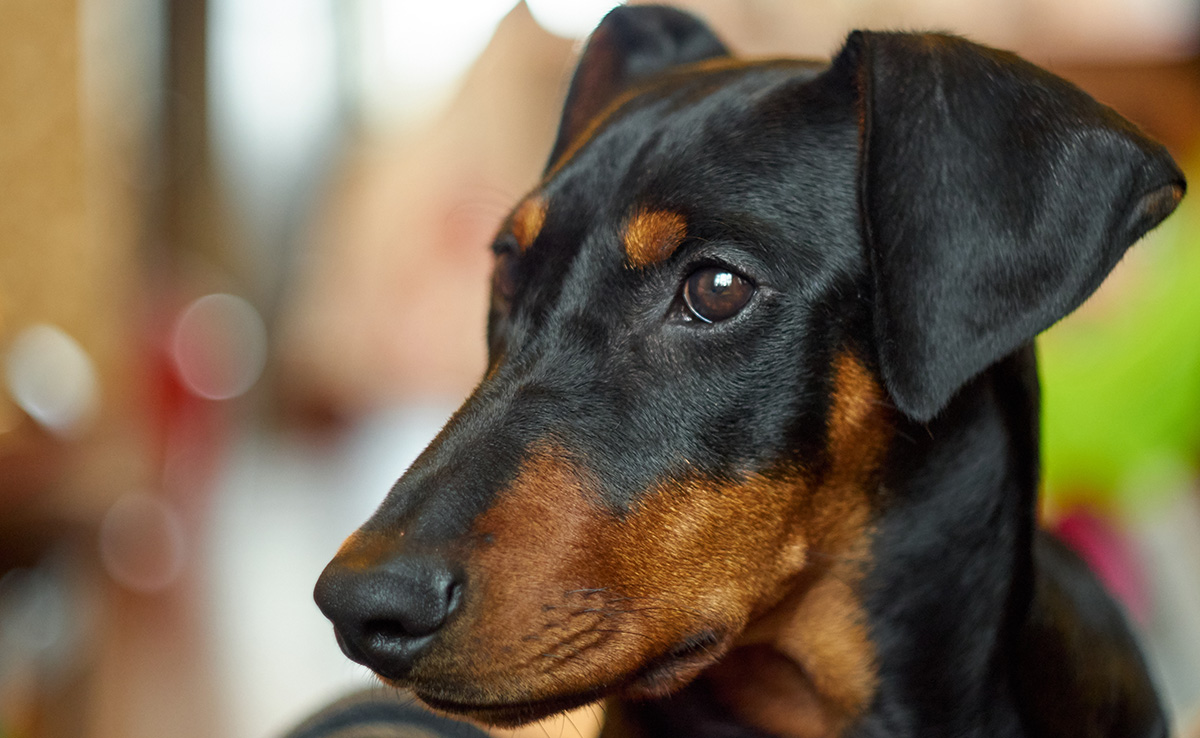German Pinscher Dog Breed Information
Among the oldest of Germany’s dog breeds, the German Pinscher is a fearless, intelligent companion. A prototype for other Pinscher breeds, they share bloodlines with the Doberman, Rottweiler, Miniature Pinscher, Affenpinscher, and Standard Schnauzer. If you can’t get enough of these clever canines, here’s what you need to know.
A Little History
Once known as Rattenfangers, German Pinschers were first bred in the 1600s when Black and Tan Terriers were crossed with German Bibarhunds and Tanners. They were initially bred to keep watch and hunt rodents, and to this day they remain members of the AKC’s Working Group.
Their first breed standard was adopted in 1884 after gaining popularity at dog shows, but the World Wars nearly eliminated them altogether. In fact, between 1949 and 1958, not a single litter was registered in West Germany. To save the breed, oversized Miniature Pinschers were bred with a female Pinscher, paving the way for almost every German Pinscher alive today.
What are German Pinschers Like?
With a muscular build and a medium frame, the German Pinscher has all the characteristics of a loyal watchdog and is an ideal size for almost any household. At 17 to 20 inches high, they are light-weight relative to their size, yet strong, sturdy, and swift. They weigh between 25 and 45 pounds, and are most often fawn, black, or blue in color.
Noted to be gentle with children, these pups are as playful as they are affectionate. Although, if you have small pets (especially rodents) you shouldn’t leave them alone unsupervised. They tend to be weary of strangers, often barking to alert their owners until the strangers withdraw. And, while they learn quickly, they can be a bit stubborn at times, so skilled training is important.
Caring for German Pinschers
Compared to some breeds, there is very little required of you to adequately care for your German Pinscher. An occasional bath and brushing will help maintain a soft and vibrant coat. You should remember to brush their teeth routinely to avoid dental disease, and trim their nails to keep them comfortable. Because they are intelligent and energetic, you’ll need to provide ample mental and physical exercise.
Most healthy German Pinschers live for 12 to 15 years. By and large, German Pinschers are robust and healthy, but they are prone to certain health conditions such as Canine Hip Dysplasia (CHD), eye disease, and Von Willebrand’s disease1.
The Cost
Breeders charge around $1,500 to adopt a German Pinscher puppy, but you will also need roughly $1,200 for first year expenses. These costs include food, supplies, and initial veterinary services such as exams and vaccinations. Each year after that, expect to spend around $500 on food and routine veterinary care.
Unfortunately, unexpected injuries and illnesses can add to your expenses. Surgery to treat CHD or glaucoma can cost several thousand dollars, and that’s not including the cost of initial, more conservative treatment. With an insurance policy from 4Paws, you can focus more on your pet’s health and worry less about the cost.
Sandy Says
Comments from our Chief Pet Officer
The German Pinscher is a very loyal and protective breed. They learn quickly, but obey under their own volition, so you will need to establish boundaries early. Ensure they are leashed when going outdoors as they will chase cats, squirrels, or any other small animal.
